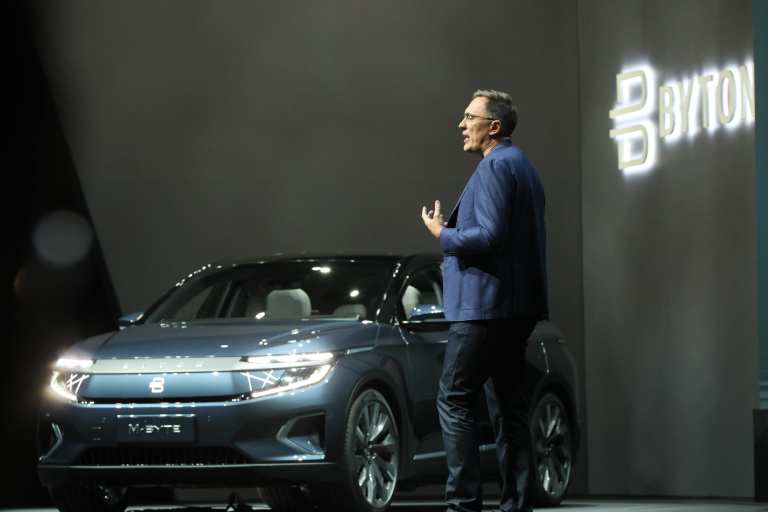At CES, Voice Plus Vehicles Jump Start The Connected Economy

The future of the connected vehicle ecosystem — emphasis on connected — is becoming more clear, it seems, every day. And that push continues this week with news from Amazon and others, along with the start of the annual International Consumer Electronics Show (CES) and conference in Las Vegas — an event where even more connected car and truck news will almost certainly be made.
We’ll give Amazon its traditional place at the front of the line — hey, it’s Amazon — with its news, which also reflects the sharp growth in popularity of voice-assisted payments and commerce, one of the emerging engines of we are taking to call the connected economy.
Amazon announced Monday (Jan. 6) it would be adding high-luxury Italian automaker Lamborghini as well as Michigan-based electric vehicle startup Rivian to its partners that will integrate its voice-enabled assistant Alexa into future vehicles. Rivian plans to include Alexa in its first all-electric vehicles, the R1S SUV and R1T pickup truck, as well as the 100,000 all-electric delivery vans Amazon bought from the carmaker, according to published reports. And those aren’t the only automakers Amazon is courting.
Amazon is “essentially talking” with all major automakers on partnering in some form, according to Arianne Walker, Amazon chief evangelist of Alexa Auto.
“It’s really more of a matter of getting things lined up for the cars that are going to be released as opposed to any hesitation,” she said.
And that’s hardly it.
Amazon, according to a statement, is working with connected-vehicle services provider Telenav to provide Alexa-enabled “voice-first navigation.” The setup is designed to work like this, according to the statement: The Telenav-Alexa integration ensures end-users can use voice for all their navigation-related interactions, even while driving through areas with spotty or non-existent cloud connectivity.
A Preview of Innovations You’ll See at #CES2020 pic.twitter.com/vdai7p8k1L
— CES (@CES) January 7, 2020
Lucrative Potential
Such developments are taking place as the lucrative potential of the connected vehicle ecosystem becomes much more clear — including via original PYMNTS research. Every weekday morning, 135 million U.S. adults drive a car to work, with commutes ranging from as little as 15 minutes to over an hour. During this daily grind, motorists are driving $212 billion in commerce as they drive to and from their workplaces and homes. Forty percent of these commuters spend over $18.7 billion getting their daily caffeine fix, while 54 percent order ahead and pay for food, influencing $47.3 billion in commerce every year.
It’s all about the connections, of course, as yet another bit of news from the growing ecosystem confirms. According to a report, as CES prepares to kick off on Tuesday (Jan. 7), Qualcomm has launched its Car-to-Cloud service, which does what the name implies: it helps car companies connect their cars to their clouds. It’s Qualcomm’s first product that integrates its automotive cockpit platform and Snapdragon automotive platforms with 4G and 5G support.
Through the service, carmakers will be able to update a vehicle’s software, as well as be able to collect vehicle and usage data. Possible use cases could include pay-as-you-go services and other new revenue streams for businesses.
Over the last decade, the combination of smartphones and apps has changed how we shop, how we pay, how we connect with people, how we discover and consume information, how we work, how we bank and even how we are paid. But as Karen Webster from PYMNTS recently observed, in many ways, however, the decade of the 2010s was the warmup act for the transformation yet to come — the transition from an app economy to one in which connected ecosystems aggregate commerce experiences and enable transactions across channels, devices and environments.
And it’s all but certain — at least according to all signs and evidence now available — that payments will power that shift.
This rise of a new connected economy is not just about vehicles, either. That connected economy will be the result of the full force of the Internet of Things (IoT) in action. Just about every device will be connected to the internet and capable of enabling a transaction — between every possible permutation of machines, people and businesses. In this new connected economy, we will find ourselves living in a world where new networks, intermediaries and enablers will change what is today considered the payments and commerce status quo.
CES Action
Evidence of that — for both connected vehicles and so-called smart homes — will be significant parts of the CES show, which runs through the rest of the week.
One of the more significant trends of 2020 will undoubtedly be the shift of more commerce-related activities to consumers’ homes as voice-assisted retail devices gain even more popularity (among other trends). Indeed, that shift gained some major energy in late 2019 when Amazon, Google, Apple and the Zigbee Alliance unveiled a new working group to create and promote the adoption of a new royalty-free connectivity standard to make smart home products more compatible. CES is focusing a decent amount of time on smart homes. Topics are set to include how voice is changing healthcare — Amazon and Google are active in that area — and how to unlock all the data that comes from smart homes.
And for connected vehicles, the show in Las Vegas in will include programs designed to explore the next steps for autonomous private and public transportation — autonomous freight also promises to play a big role — and how such technology will itself connect to other digital ecosystems and services, which is among the most significant challenges and opportunities for this brand new decade.
It’s a chore to underestimated what’s coming down the road when it comes to connected vehicles and the broader connected economy. But this week promises to bring new navigation about that fast-approaching future.